Your cart is empty
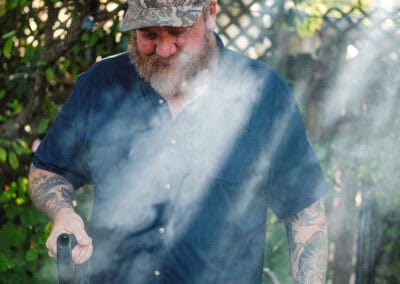
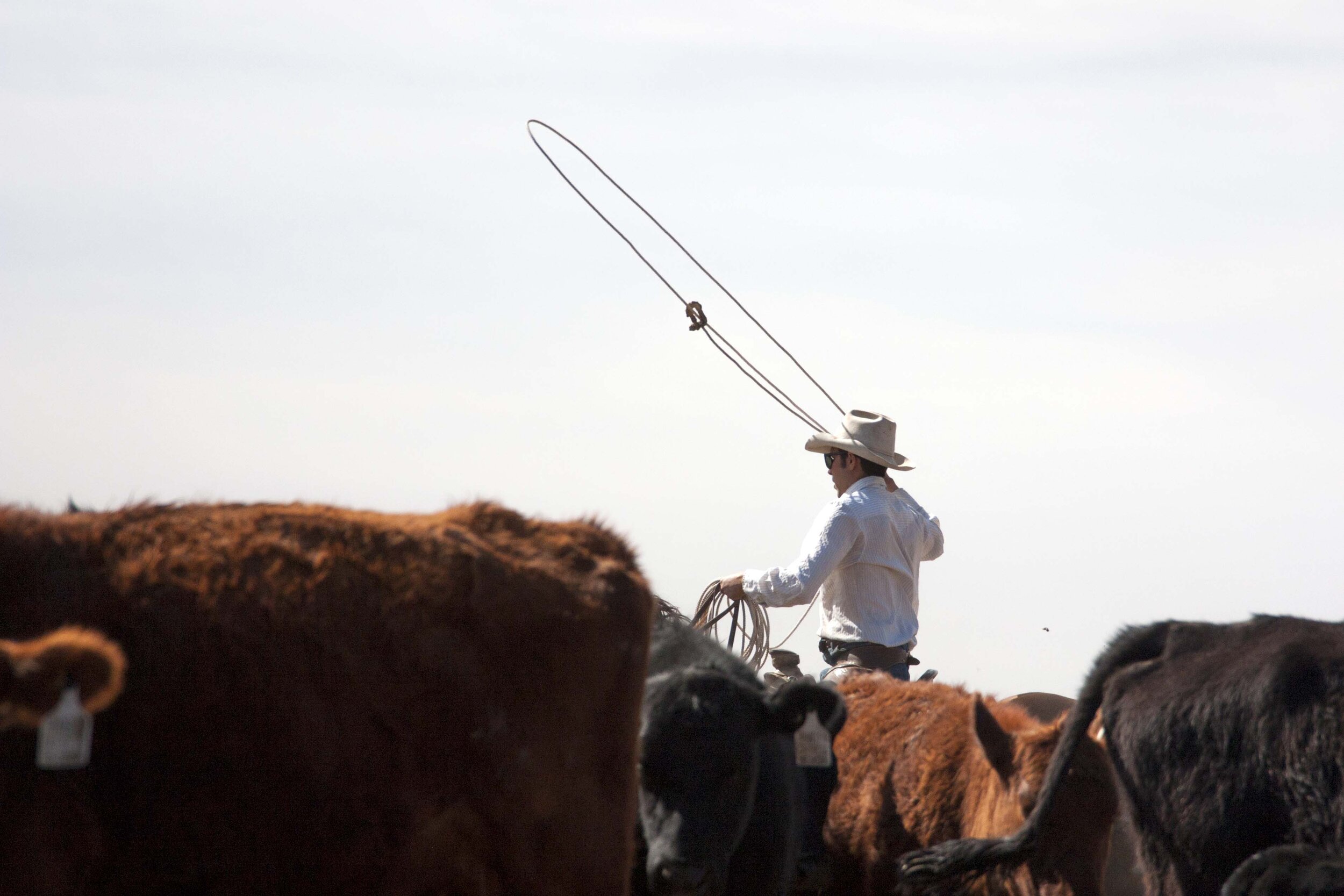
Something deep in my bones and blood is called to ranching. By choice, I’m a first-generation rancher; I don’t own land and may never realize that privilege. I don’t fully understand how or why, but I am inextricably tied to land and so I find myself in constant search of a story different than the one to which I was born. The pursuit of this identity has required a winding path that has left me removed from managing cattle for stretches of time; those periods of my life I can only describe as a kind of drought within myself. In times when I’m not on the land, it becomes difficult to hear my inner compass through the static noise of all the practical reasons that derail me from a life squarely within ranching: concerns of safety nets, financial stability, land ownership, questions of whether my body will hold out for a lifetime of this work, if putting off building a family is the right decision. But through the noise, I’m always called back.
Despite coming to ranching later in life, I’ve been able to quilt together many of the softer skills needed to manage land. I pride myself in keen stockmanship, planning grazing for healthy grassland ecosystems and to think creatively about how all the pieces of a ranch can fit together. Lately, I find myself yearning for deeper understanding of the complexities inherent to expansive landscapes, to be competent at managing land on a larger scale. This means making the choice to completely immerse myself in things I do not know, committing fully to learning good horsemanship and to master practical skills like the art of fixing barbed wire fences, understanding how irrigation water flows from wells to livestock tanks, and navigating vast and varied pastures. This year I was offered the rare opportunity to live and work on the Mescalero Apache Indian Reservation, covering more than 460,000 acres in southern New Mexico along the eastern edge of the Sacramento Mountains. I would be learning from and working with the cattle manager for Triangle P Cattle Company, helping to run a cow and yearling lease on grasslands in the heart of the Mescalero.

This was the chance to quench my own inner drought and dive deeper into the work of tending land and livestock. Over the course of the past ten years, I’ve lived on many different landbases to pursue my chosen craft of managing land with cattle.
Often, by nature of the job and how the seasons fall, my time in any one place is short, leaving me with a small but aching sense of disconnect and opaqueness; not in residence long enough to build real intimacy with a place or feel a sense of home. I arrived in early summer to New Mexico; she was dressed in muted greens, browns, yellows. Rolling hills of alligator junipers and, violet waves of grama grass eyelashes and dry creek bottoms anticipating the stacked thunderheads of monsoon season. My new home is a camper trailer at Cow Camp Number Two, nestled deep into the Mescalero, an hour’s drive on dirt two tracks and gravel roads to the closest town. In the early days for me on the reservation, the land felt foreign. I was a visitor peering in from the outside as if the rocks and soil and timber were not yet mine to hold.
The first weeks of working on the Mescalero were hard. Fencing pliers fit awkwardly in my hands. Communicating with my horse, Jackie, about how I wanted to move through cows was slow and inconsistent and though I know how to work cattle on foot well, my intentions were quickly lost in translation. During times of high pressure in the corrals with wilder range cattle, I often found myself standing back, partly to observe and learn, partly scared to do something wrong, partly out of self-preservation. Almost every task expected of me on the job was a new skill to learn and some days it felt that there wasn’t a single thing I was fully competent at. This filled my mind with loud, buzzing doubts. On these days I reminded myself that I had a choice, that there were an infinite number of paths available to me and if this wasn’t what I wanted, I could leave. Even then, there was not even a shimmer of doubt that I should be here, in this place. Every day I choose this life, I choose to ranch, I choose responsibility for this land above all things. All paths lead to the Mescalero.

The summer stretched on and without realizing, the constant effort and strain of new skills gradually etched out habits and where physical movements and the sequence of thoughts once felt forced, the way my body moved and used tools started to feel natural and I figured out ways to harness my own power. I found that I wasn’t standing back in the corrals anymore, fast-thinking and acting without fear grew to be second nature and I learned a shared language of cowboys. Ceaseless concentration began to give way to simply living life. And oh, what a life it became. Life at cow camp became the all-consuming joy of loping through the junipers on Jackie in pursuit of a cow; starting to feel a deep trust and partnership develop between us. Life became packing horses out to the Number Five pasture to camp out in tipis with our cattle for early morning gathers; it became the sweetest sound of elk bulls bugling in rut, swimming in livestock tanks on balmy evenings, sitting cross-legged on the roof of my camper sipping a beer after working calves in the corral with Apache cowboys, and laundry hung on a barbed wire fence to dry.
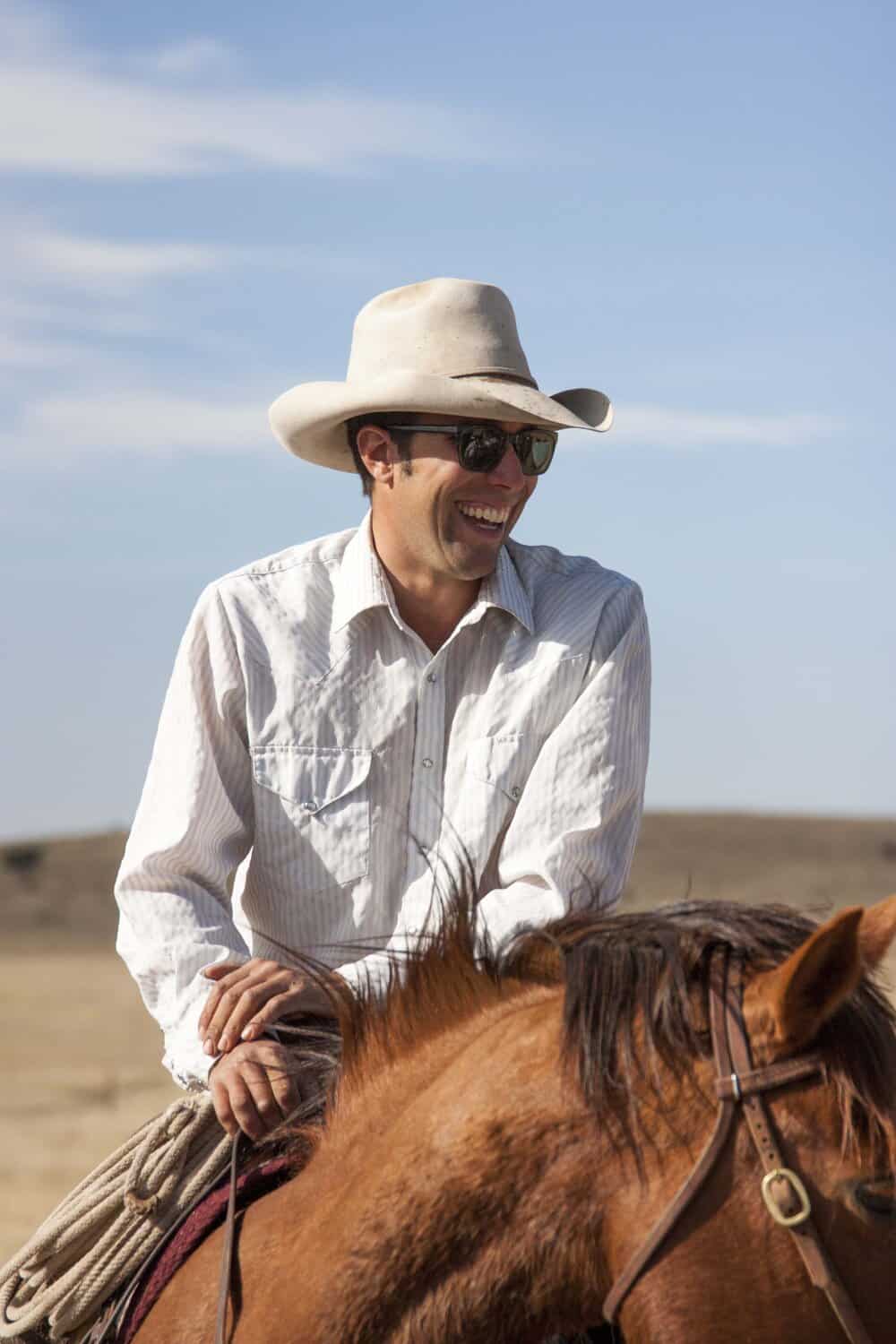
I fell in love with the Mescalero. Life is stripped down to the sweet bones here. There is no chaff and things are spartan. But in the void of creature comforts, there is room to see that life is vibrating, pulsing. There is a sense of self and connection that emerges in saddling my mare, in pulling my weight up on her back, in the smell of wet leather; there is electricity in digging my fingers into her lathered coat. The colors are alive in the Number Five as grasses head out to seed alongside the piercing vibrancy of Indian Paintbrush; rains empower pastures to explode to green overnight, making use of what tiny amount of water runs across it. Coyotes sing at night stirring our cow dogs, and nighthawks lay in wait on the dirt two tracks with pinhole eyes reflecting pickup headlights. All living things out here are survivors, able to make a lot with a little.The monsoons came in July, bidding towering masses of clouds to convene in late afternoon, casting shadows like an oil painting around Pajarita Mountain. More times than not, we’d get caught in the storm horseback while gathering cows, too many miles from the Number Two to seek shelter. Thick ribbons of sky would darken with rain and violent, contorted thunderbolts; sideways pelting hail soaking through my exposed blue jeans under my slicker. My mare would find cover in the boughs of a squat juniper and a sharp, small sliver of fear down in my chest made me feel more alive and more grounded than I’ve ever felt.
Fall at cow camp brings a new season of welcome work and busyness. Pajarita changes her wardrobe from emerald jewel tones to a subtle patchwork of sienna and umber scrub oak and cured out, drooping side oats. Days have a quiet rhythm to them now and are dictated by the incremental shortage of daylight. The Tribe cowboys and I wean our calves off the cows. Separated from their mamas by a wire fence, the calves bawl for a few days then, then in acceptance, move off to form renegade packs, jumping and kicking in rebellion when we ride by. Shipping our yearling steers requires camping out in the mountains to the south of cow camp with the full Triangle P crew; these sacred weeks are defined by warming our fingers with tin cups of cowboy coffee, palpable tradition, campfire camaraderie, and the silent frosted breath of yearlings in the corrals. We saddle horses in the predawn light, senses heightened, and go hunting for remnant yearlings hiding in the draws and ridges, searching for cattle tracks and signs in the dust. Fall at cow camp also brings out in me a new season of maturation. Riding to gather in the steep Ponderosa canyons of our lease, I feel at home now and handier at the work, lessons are fewer, riding feels familiar, and there is no longer overwhelming pretense. I feel like a rancher, albeit a misfit rancher perhaps, but a rancher all the same.
What the Mescalero has taught me is that maybe I don’t need to own land and maybe it can never truly be owned. Instead, perhaps I should strive for reverence, for a reciprocal relationship, a marriage with the land.
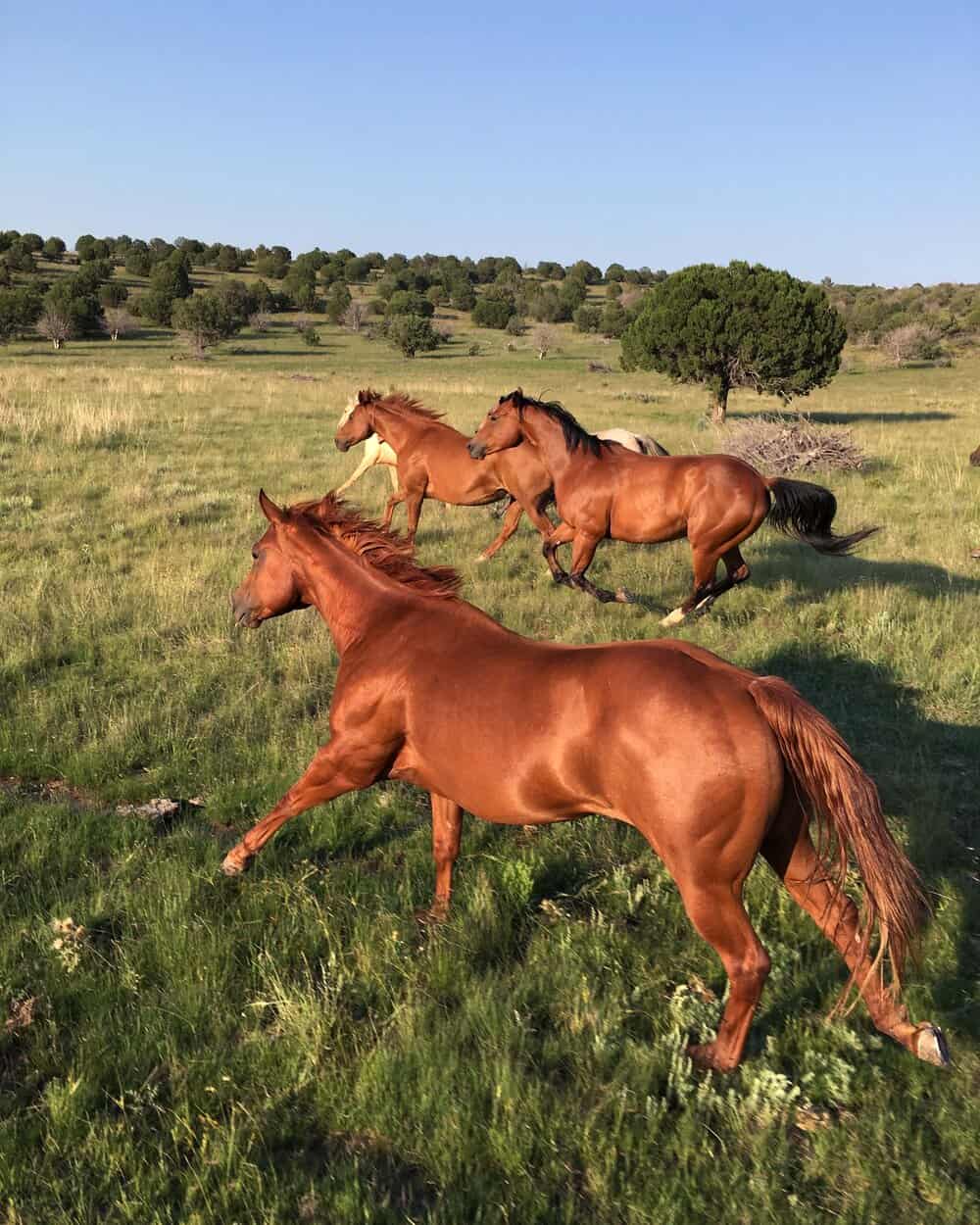
What I have learned on the Mescalero is that I can hold space for two versions of myself. One version, always learning, questioning, new and green. The mirror version, competent and skilled, ready to take on this life wholeheartedly, and the two parts together make me enough. I see myself in many of the misfit cowboys here, not born to ranching, but choosing to be in relationship with the land every day. Bringing their grit and sundry experiences to the table for the shared and singular goal of tending this ground and these animals as their livelihood; this uncommon path has made them strong and agile.
The Mescalero Apaches were historically a nomadic people with tribal grounds stretching from the Rio Grande down through Mexico, where they hunted buffalo on the Southern Plains and gathered staple Mescal Agave in the desert. This land which I’ve been given the honor to help tend, these high mountains and grasslands, are the Apache homelands and the center of the universe. According to Apache tradition, the Mescalero is where four sacred mountains lie, representing the directions of life, where life itself was created, and though its people may roam, home is found inside them and though living in deep symbiosis with these hallowed lands. What the Mescalero has taught me is that maybe I don’t need to own land and maybe it can never truly be owned. Instead, perhaps I should strive for reverence, for a reciprocal relationship, a marriage with the land.
What the Mescalero has taught me about home is how to hold the dissonance of learning a piece of land, welcoming the full weight of responsibility for it, letting it seep into your flesh, change you fully, to make it your home. At the same time, also accepting the ephemeral nature of our time with these places, that we’re always a visitor, a fleeting participant. And in the end, it’s the place that chooses to make a home in us. Long live the misfit cowboys. Long live the Mescalero.


Related Stories

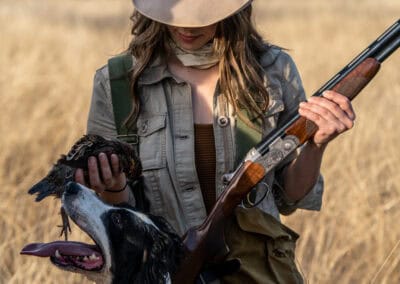

Latest Stories


